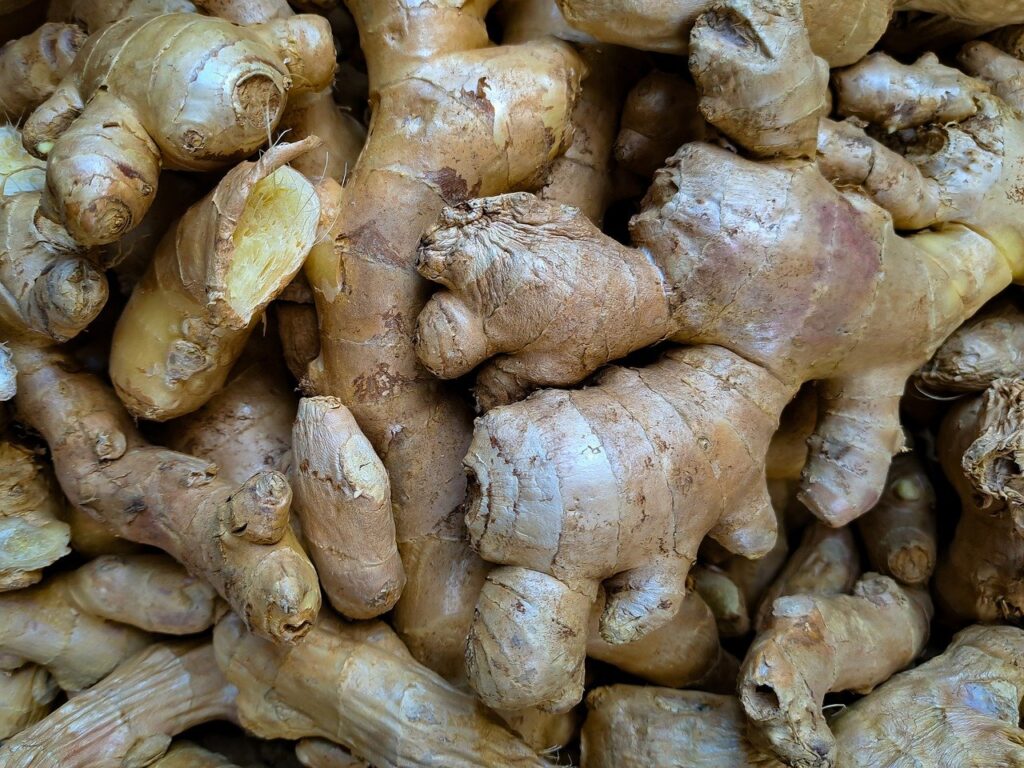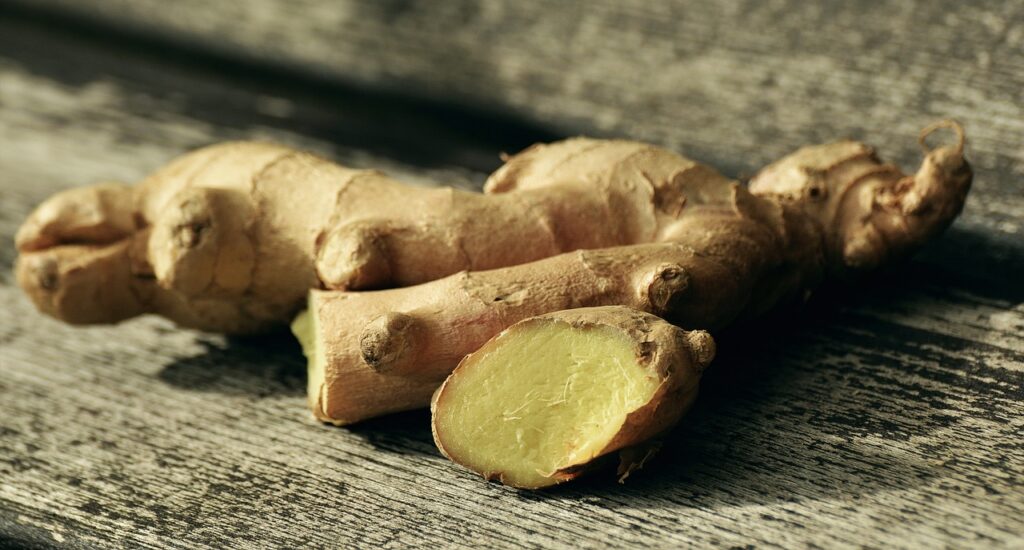If you’re seeking natural relief for joint pain, look no further! In this article, you’ll discover the most popular herbal remedies that can effectively alleviate joint pain. From turmeric and ginger to boswellia and devil’s claw, these natural remedies have been used for centuries to reduce inflammation and promote joint health. Say goodbye to discomfort and embrace the power of nature with these remarkable herbal solutions.
Turmeric
Properties of Turmeric
Turmeric, a bright yellow spice commonly used in Indian cuisine, is known for its powerful anti-inflammatory properties. This herb contains a compound called curcumin, which has been shown to reduce pain and inflammation in the joints. Curcumin works by inhibiting inflammatory enzymes and blocking the production of inflammatory molecules in the body. In addition to its anti-inflammatory effects, turmeric is also a potent antioxidant, protecting the body from oxidative damage.
How to Use Turmeric for Joint Pain Relief
To harness the benefits of turmeric for joint pain relief, you can incorporate it into your diet or use it topically. Adding turmeric to your meals can help reduce inflammation throughout the body. You can sprinkle it onto roasted vegetables, mix it into smoothies, or even brew it into a warm turmeric tea. Additionally, you can create a paste by mixing turmeric powder with water and apply it directly to the affected joints to soothe pain and inflammation.
Precautions and Side Effects
While turmeric is generally considered safe for most people, it may cause some side effects in higher doses. These can include stomach upset, diarrhea, or allergic reactions. If you are taking blood-thinning medications or have gallbladder disease, it is recommended to consult with your healthcare provider before adding turmeric to your routine. Pregnant women should also exercise caution and consult their doctor before using turmeric supplements.
Ginger
Properties of Ginger
Ginger, a popular spice with a long history of medicinal use, is well-known for its anti-inflammatory and analgesic properties. The active compounds in ginger, called gingerols and shogaols, have been found to inhibit inflammatory pathways and reduce pain in the joints. Ginger also contains antioxidants that can help protect the cells from damage and enhance the body’s natural healing process.
How to Use Ginger for Joint Pain Relief
There are several ways to use ginger for joint pain relief. One simple method is to add fresh or powdered ginger to your meals. You can grate fresh ginger root and add it to stir-fries, soups, or smoothies. Alternatively, you can brew ginger tea by steeping sliced ginger in hot water for a soothing and aromatic drink. Topical application of ginger oil or ginger paste can also provide localized relief when applied directly to the affected joints.
Precautions and Side Effects
In general, ginger is safe for most people when consumed in moderate amounts. However, some individuals may experience mild side effects such as heartburn, stomach upset, or diarrhea. Ginger may also interact with certain medications, including blood thinners, so it is important to consult with your healthcare provider before using ginger as a remedy for joint pain. Pregnant women should seek medical advice before using ginger supplements.

Boswellia
Properties of Boswellia
Boswellia, also known as Indian frankincense, is an herbal extract derived from the resin of the Boswellia serrata tree. This herb has been used in traditional medicine for centuries to alleviate joint pain and inflammation. The active compounds in boswellia, known as boswellic acids, have been shown to inhibit the production of inflammatory enzymes and reduce joint swelling.
How to Use Boswellia for Joint Pain Relief
Boswellia supplements are available in the form of capsules or tablets. The recommended dosage may vary depending on the product, so it is important to follow the instructions provided on the packaging or consult with a healthcare professional. Boswellia can also be found as an ingredient in topical creams or ointments. Applying these formulations directly to the affected joints can provide localized relief.
Precautions and Side Effects
Boswellia is generally considered safe for most individuals when taken as directed. However, some people may experience mild side effects such as stomach upset, diarrhea, or skin rash. It is important to note that boswellia may interact with certain medications, such as non-steroidal anti-inflammatory drugs (NSAIDs) or blood thinners. If you have any underlying medical conditions or are taking medications, it is advisable to consult with your healthcare provider before using boswellia.
Devil’s Claw
Properties of Devil’s Claw
Devil’s Claw is a plant native to southern Africa, and its roots have long been used in traditional medicine to relieve joint pain and inflammation. The active compounds in Devil’s Claw, known as harpagosides, have been shown to possess anti-inflammatory and analgesic properties. These compounds work by reducing the production of inflammatory molecules in the body and blocking pain signals.
How to Use Devil’s Claw for Joint Pain Relief
Devil’s Claw can be taken in the form of capsules, tablets, or liquid extracts. It is important to follow the recommended dosage provided on the product packaging or consult with a healthcare professional for guidance. Devil’s Claw can also be used topically in the form of creams or ointments. Applying these formulations directly to the affected joints can provide targeted relief.
Precautions and Side Effects
Devil’s Claw is generally safe for most individuals when used as directed. However, some people may experience mild side effects such as stomach upset, diarrhea, or allergic reactions. Devil’s Claw may also interact with certain medications, including blood thinners and antiplatelet drugs. If you have any underlying health conditions or are taking medications, it is advisable to consult with your healthcare provider before using Devil’s Claw.

Eucalyptus
Properties of Eucalyptus
Eucalyptus, a tree native to Australia, has long been used for its medicinal properties. The essential oil derived from the leaves of eucalyptus trees contains a compound called eucalyptol, which exhibits anti-inflammatory and analgesic effects. Eucalyptus oil can help reduce joint pain and inflammation when applied topically.
How to Use Eucalyptus for Joint Pain Relief
Eucalyptus oil can be diluted with a carrier oil, such as coconut or olive oil, and applied directly to the affected joints for immediate relief. It is important to perform a patch test before applying eucalyptus oil topically to ensure that you are not allergic or sensitive to it. Additionally, you can add a few drops of eucalyptus oil to a warm bath or use a eucalyptus-based cream or ointment for joint pain relief.
Precautions and Side Effects
While eucalyptus oil is generally safe for topical use, it can cause skin irritation or allergic reactions in some individuals. It is important to dilute eucalyptus oil properly and perform a patch test before applying it to a larger area of your skin. If you experience any adverse reactions, discontinue use and seek medical advice. Avoid ingesting eucalyptus oil, as it can be toxic when consumed orally.
Frankincense
Properties of Frankincense
Frankincense, derived from the resin of Boswellia trees, has been used for centuries in traditional medicine for its anti-inflammatory and analgesic properties. The active compounds in frankincense, including boswellic acids, have been found to inhibit inflammatory enzymes and reduce pain and swelling in the joints.
How to Use Frankincense for Joint Pain Relief
Frankincense supplements are available in capsule or tablet form and can be taken orally. The recommended dosage may vary depending on the product, so it is important to follow the instructions provided on the packaging or consult with a healthcare professional. In addition to oral supplementation, frankincense essential oil can be diluted with a carrier oil and applied topically to the affected joints for soothing relief.
Precautions and Side Effects
Frankincense is generally safe for most individuals when used as directed. However, some people may experience mild side effects such as stomach upset, diarrhea, or skin rash. It is important to note that frankincense may interact with certain medications, including blood thinners. If you have any underlying medical conditions or are taking medications, it is advisable to consult with your healthcare provider before using frankincense.

Ginkgo Biloba
Properties of Ginkgo Biloba
Ginkgo Biloba, derived from the leaves of the Ginkgo Biloba tree, has been used in traditional medicine for its anti-inflammatory and antioxidant properties. The active compounds in Ginkgo Biloba, called flavonoids and terpenoids, have been shown to reduce inflammation and improve blood flow. These effects can help alleviate joint pain and promote overall joint health.
How to Use Ginkgo Biloba for Joint Pain Relief
Ginkgo Biloba supplements are available in the form of capsules, tablets, or extracts. The recommended dosage may vary depending on the product, so it is important to follow the instructions provided on the packaging or consult with a healthcare professional. Ginkgo Biloba can also be brewed into a tea by steeping dried leaves in hot water. Drinking Ginkgo Biloba tea regularly can help reduce joint inflammation.
Precautions and Side Effects
Ginkgo Biloba is generally safe for most individuals when taken as directed. However, some people may experience mild side effects such as headache, dizziness, or upset stomach. Ginkgo Biloba may also interact with certain medications, including blood thinners and some antidepressants. If you have any underlying medical conditions or are taking medications, it is advisable to consult with your healthcare provider before using Ginkgo Biloba.
Stinging Nettle
Properties of Stinging Nettle
Stinging Nettle, a plant that grows in Europe, Asia, and North America, has been used for centuries as a natural remedy for joint pain and inflammation. The leaves and roots of Stinging Nettle contain bioactive compounds that possess anti-inflammatory and analgesic properties. These compounds help reduce pain and swelling in the joints.
How to Use Stinging Nettle for Joint Pain Relief
Stinging Nettle can be consumed as a tea, taken in the form of capsules or tablets, or applied topically in the form of creams or ointments. To make Stinging Nettle tea, steep dried leaves or roots in hot water for 10-15 minutes. Drinking the tea regularly can help alleviate joint pain and inflammation. Stinging Nettle supplements should be taken according to the recommended dosage provided on the product packaging or as advised by a healthcare professional.
Precautions and Side Effects
Stinging Nettle is generally safe for most individuals when used as directed. However, some people may experience mild side effects such as upset stomach, diarrhea, or skin rash. It is important to note that Stinging Nettle may interact with certain medications, such as blood thinners or diuretics. If you have any underlying health conditions or are taking medications, it is advisable to consult with your healthcare provider before using Stinging Nettle.
White Willow Bark
Properties of White Willow Bark
White Willow Bark, derived from the bark of the white willow tree, has been used for centuries as a natural remedy for joint pain and inflammation. The active compound in White Willow Bark, called salicylic acid, is a natural precursor to aspirin and exhibits anti-inflammatory and analgesic effects. White Willow Bark can help reduce joint pain and improve mobility.
How to Use White Willow Bark for Joint Pain Relief
White Willow Bark is available in various forms, including capsules, tablets, extracts, and teas. The recommended dosage may vary depending on the product, so it is important to follow the instructions provided on the packaging or consult with a healthcare professional. Brewing White Willow Bark into a tea by steeping the bark in hot water for 10-15 minutes can provide a soothing beverage for joint pain relief.
Precautions and Side Effects
While White Willow Bark is generally safe for most individuals, it can cause side effects in some people. These can include stomach upset, allergic reactions, or worsening of asthma symptoms in individuals with asthma. White Willow Bark should not be used by individuals who are allergic to aspirin or are taking blood thinners. If you have any underlying health conditions or are taking medications, it is advisable to consult with your healthcare provider before using White Willow Bark.
Conclusion
Summary of Popular Herbal Remedies for Joint Pain Relief
In summary, there are several popular herbal remedies that can be used to alleviate joint pain and inflammation. Turmeric, ginger, boswellia, Devil’s Claw, eucalyptus, frankincense, Ginkgo Biloba, Stinging Nettle, and White Willow Bark have all been shown to possess anti-inflammatory and analgesic properties. These herbs can be incorporated into your daily routine through dietary supplementation, topical application, or herbal teas. However, it is important to exercise caution and consult with a healthcare professional before using these remedies, especially if you have underlying health conditions or are taking medications. With the proper precautions, these herbal remedies can provide natural and effective joint pain relief.
